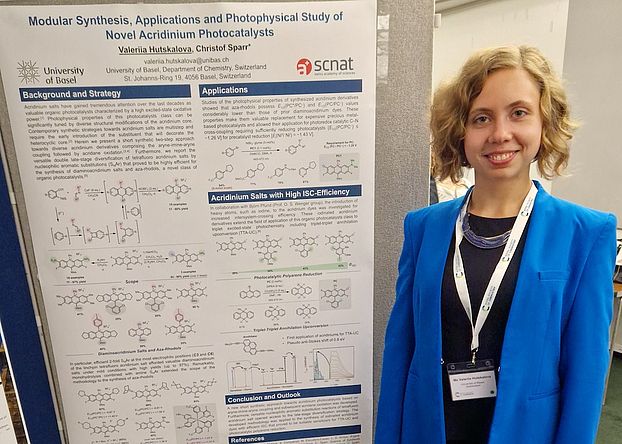/ Erfolgsgeschichten
3D structures thanks to electron diffraction: Collaboration with ELDICO Scientific enables structural elucidation of tiny crystals





Using electron diffraction in tiny crystal needles, researchers from Basel have succeeded in determining the three-dimensional structure of a compound produced by Professor Christof Sparr’s group using a special synthesis method. The team benefited from access to the Electron Diffraction Experience Center at Switzerland Innovation Park Basel Area, which the SNI offers to its members.
Determining the three-dimensional configuration of novel molecules is an essential part of modern chemical research — and X-ray structural analysis of single crystals has established itself as the method of choice. If the crystals are too small, not pure enough or not present in sufficient quantities, however, X-ray structural analysis does not always produce the desired results. 3D electron diffraction can be helpful in such situations — as demonstrated by an interdisciplinary team in a Nano-Argovia project a few years ago.
Sophisticated method
Back then, the researchers used an electron microscope for their measurements. Now, thanks to the founding of the start-up ELDICO Scientific in 2019 and the continuous development of a specialized 3D electron diffraction measuring device (a 3D electron diffractometer), researchers have access to a more sophisticated technique. This approach is based on deflecting electrons from a focused electron beam through the crystal lattice of the examined material in order to produce a characteristic diffraction pattern. This pattern is then fed into special software in order to calculate the arrangement and spacing of atoms in the crystal lattice, resulting in a 3D structural model of the molecule in question.
The SNI is a member of the consortium behind the Electron Diffraction Experience Center at Switzerland Innovation Park Basel Area, which was initiated by ELDICO Scientific. Accordingly, SNI members also have access to this innovative technology — and therefore to the structural analysis of a wide range of chemical compounds.
Success through electron diffraction
Valeriia Hutskalova from Professor Christof Sparr’s team at the Department of Chemistry at the University of Basel has seized this opportunity. As part of her doctoral thesis, she worked on the development of novel synthesis methods in order to catalytically break open aromatic rings.
To this end, she developed an approach known as “aromatic ring-opening metathesis,” which involves breaking open a highly stable aromatic ring and converting it into interesting new compounds. During the reaction, a metal-based catalyst attacks the aromatic ring to form an intermediate, which in turn leads to the formation of new aromatics. Given the small crystal size of less than 1 μm, however, it was not possible to analyze the structures of all the newly synthesized compounds using X-ray structural analysis — which led the crystallographers Dr. Alessandro Prescimone (University of Basel) and Dr. Christian Jandl (ELDICO Scientific) to consider using electron diffraction.
“Sample preparation for the analysis was simple,” says Hutskalova. “The crystallographers applied a powder of tiny crystal needles to a transmission electron microscope grating and measured the sample using the ELDICO ED-1 electron diffractometer.” Analysis of the diffraction data and various refinements then allowed the reliable elucidation of the molecules’ 3D structure — with statistical calculations confirming the validity of the results.
This work has proven the effectiveness of electron diffraction as an alternative to single crystal X-ray analysis for tiny crystals when it comes to elucidating the 3D structure of a new group of substances. “We assume that electron diffraction will undergo further development and play an increasingly central role in structural analysis in organic chemistry in the future,” Sparr concludes.
Further information:
Research group C. Sparr, University of Basel Basel





